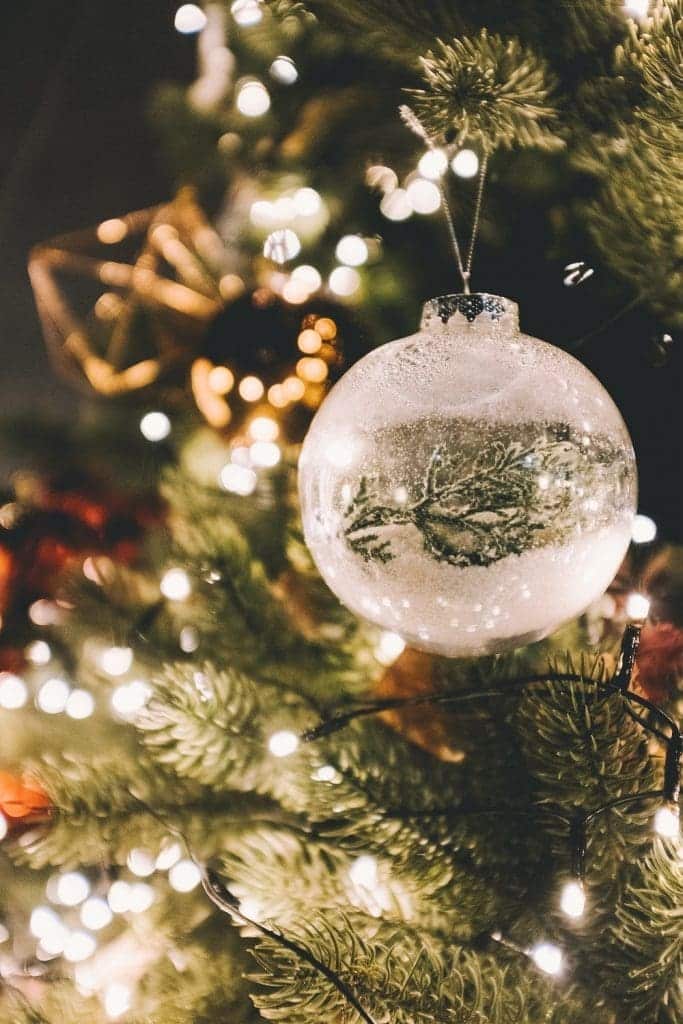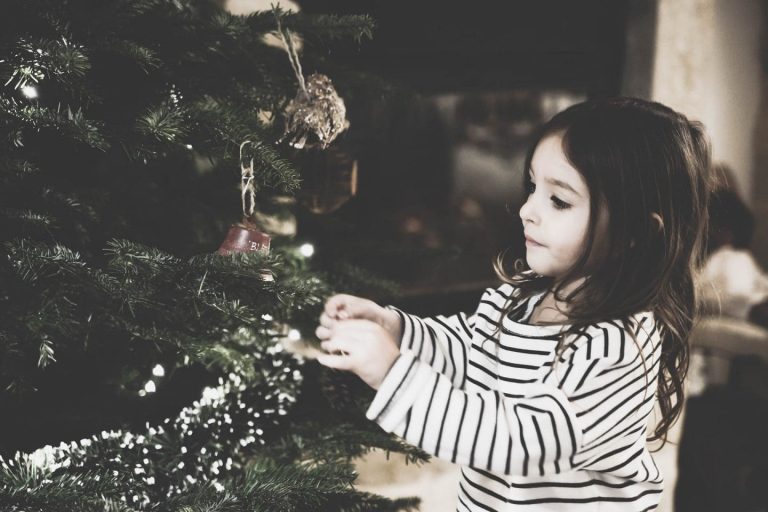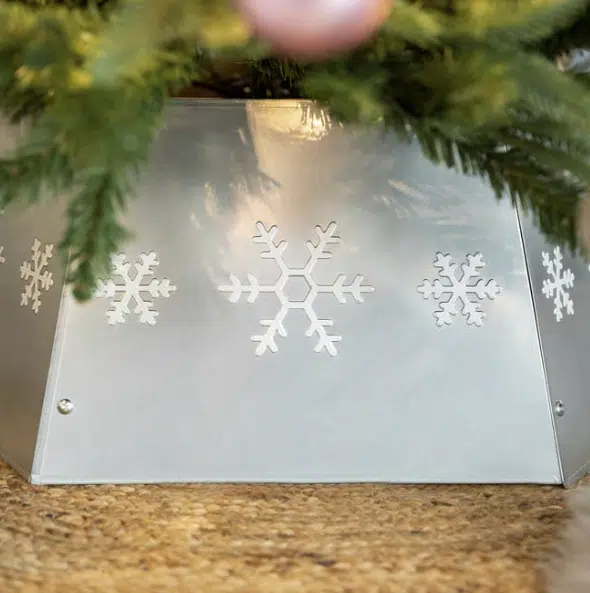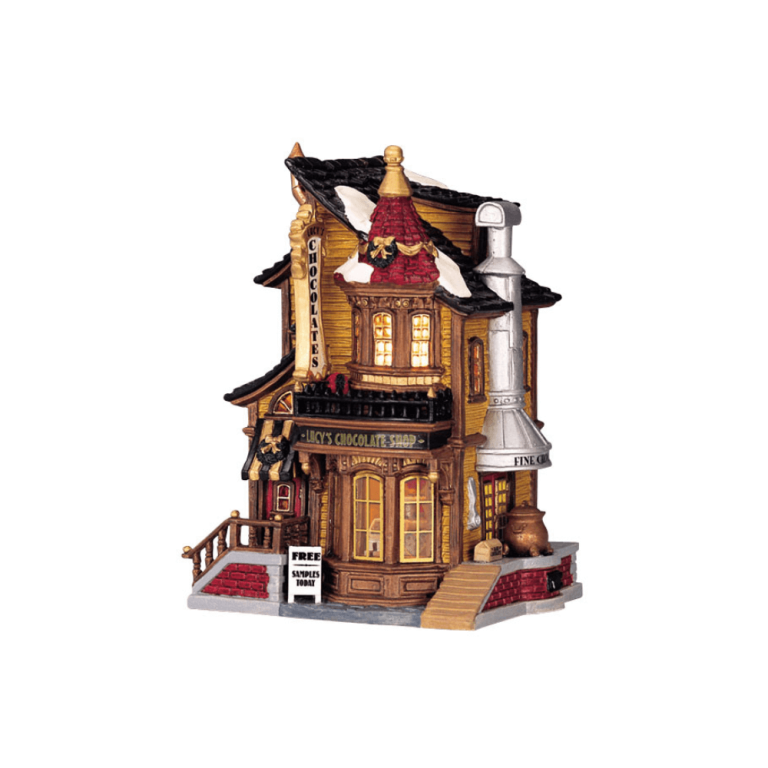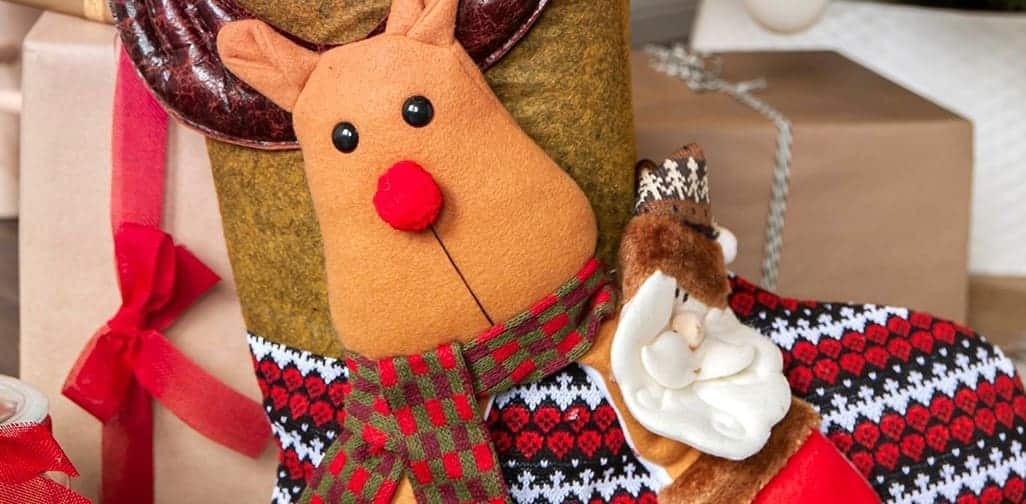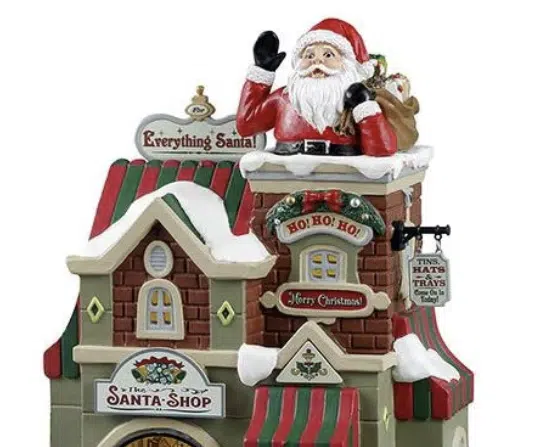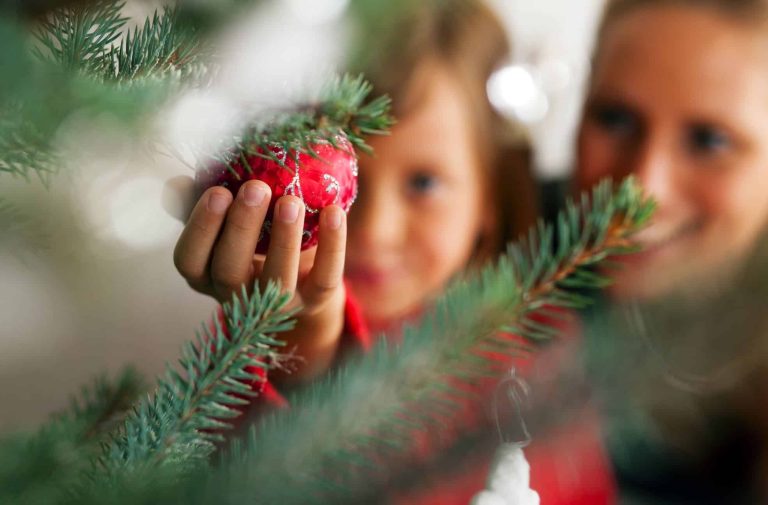Why are Christmas trees popular?
Ever wondered why are Christmas trees so popular? Both real and fake, just about every home has one at Christmas – and the history of these trees is fascinating. Here we take a closer look.

While people in ancient times used green trees or green palm rushes as part of their celebrations, it wasn’t until the early Romans decided to mark solstice with a celebration called Saturnalia that green trees became popular.
This was to honour the God of agriculture, Saturn, since the Romans knew that this time of year meant that the orchards and farms would soon be fruitful and green.
This then saw them decorate their homes and their temples with evergreen boughs, trees and plants.
The Druids also used evergreen boughs to decorate their temples and the Vikings also used evergreens to celebrate their sun god, Balder.
The tradition of Christmas trees
However, the tradition of Christmas trees as we know them did not really start until the 16th century when devout Christians in Germany decided to bring decorated trees into their homes.
While some built a pyramid of wood and decorated these with evergreens and candles, it wasn’t until the Protestant reformer Martin Luther added lit candles to a tree did the tradition take-off.
Apparently, one winter’s evening he was walking home and composing a sermon and was said to be awed by the brilliance of stars that were twinkling amongst the evergreen trees.
Determined to recapture this scene for his own family, he put up a tree in the main room of his home and then added the lighted candles with wires to its branches.
The Germans also took their traditions to the USA and in the 1830s those who settled in Pennsylvania began putting a traditional Christmas tree on display. It must be said that most Americans in the 19th-century were not impressed with Christmas trees and did not put them in their own homes.
Indeed, even in the 1840s, Christmas trees were seen by most Americans to be a pagan symbol.
Decorated Christmas trees
Even in Britain, Oliver Cromwell used to preach against the traditions of Christmas including carols and decorated Christmas trees – he said any expression of joy was deemed to ‘desecrate the sacred event’.
It wasn’t until 1846, when the popular royals, Queen Victoria and Prince Albert, a German, were shown in a sketch standing with their children in Windsor Castle around a Christmas tree in the Illustrated London News.
At the time, Queen Victoria was popular with the British public and what was done at court became fashionable with everyone else.
This meant that the Christmas tree became immediately popular in Britain but also on the East Coast of America and now the Christmas tree had finally arrived.
Christmas tree ornaments began arriving from Germany in the 1890s to help underpin the increasing popularity of the tree.
The one big difference between European Christmas trees at the time and the American trees was all down to size.
Europeans opted for a small Christmas tree
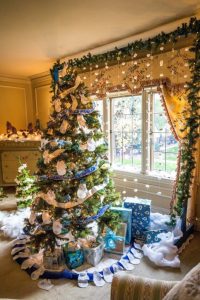
Among the Christmas tree decorations in the early 20th century, most people opted for homemade ornaments, while others used apples, cookies and then electricity ushered in the use of Christmas lights so they could now be switched on for days on end.
With the advent of Christmas tree lights, the bigger trees began to increasingly appear in the centre of towns and cities and went to become a well-established tradition.
In the UK, the most popular type of Christmas trees tend to be spruce, as this is a native species, whereas in the US, the bestselling Christmas trees tend to be fir trees as well as Scotch and white pine trees.
When should the Christmas tree go up?
It’s one of the age-old questions, and that’s when should the Christmas tree go up? (Along with when should you take your Christmas trees down …).
There’s no set answer and everyone seems to have a different date in mind, whether they are tree growers, religious people or other experts.
In days gone by, in what was a Roman Catholic tradition, the Christmas tree was not actually put up until Christmas Eve afternoon.
Important part of the Christmas celebrations
There’s no chance of that happening today when the putting up and then decorating the tree is an important part of the Christmas celebrations.
The reason for this is that a lot of people go to lots of effort and expense so want to have their Christmas tree up for longer.
One school of thought says that you should put your Christmas tree up at the start of advent.
This is a religious name for the period leading up to Christmas and covers the four Sundays up to Christmas Day. The start of advent is the Sunday closest to November 30, which is known as the feast of St Andrew.
Putting a tree up
And just to spoil your diary-planning even further, some follow a tradition that says you should wait until 12 days before Christmas before putting a tree up.
Others say you should wait for the third Sunday of Advent and some will suggest the second Saturday in December.
However, one of the downsides for putting a tree up too early, then it’s unlikely to be looking its best on Christmas day when it’s the centre of events.
It may help that the British Christmas Tree Growers’ Association says that you should buy your Christmas tree from 1 December so you get the most out of it.
So, when should you take your Christmas tree down?
Fortunately, most people seem to agree, and tradition usually dictates, that you should wait until 12 days after Christmas – though many people start taking down their tree and decorations on Boxing Day.
Christmas trees and presents
While Christmas trees have become incredibly popular, they were not associated with presents for a very long time.
As a custom, it began in Germany followed by the Netherlands and people in Scandinavia with gifts being given anonymously.
In Denmark, the custom in the early days was to place a present under the Christmas tree that had been wrapped several times with a different name on each wrapping paper.
The aim was that the recipient only knew it was their present once all of the layers had been opened.
When the Christmas tree became popular
It should also be noted that when the Christmas tree became popular after Queen Victoria and Prince Albert Place were pictured with theirs, the Christmas presents were hanging from the branches.
That’s because they were only small tokens such as sweets that were handed over on Christmas Day – unlike today’s show-stopping presents that are handed over in many homes.
However, the tradition of placing presents underneath the tree started in the US and not for the reasons most people will appreciate.
While Dutch and German immigrants took the tradition of Christmas trees and hanging presents from them to the US in the early 1800s, it wasn’t until many years later that others took up the tradition.
Family-friendly holiday season
Essentially, civic leaders, as well as authors in America, wanted to replace the more traditional and often rowdy events called wassailing that involved alcohol-fuelled Christmas traditions to become a more family-friendly holiday season.
Until then, wassailing either meant:
- Singing Christmas carols from house to house
- Or drinking lots of alcohol and enjoying oneself with others in a lively, noisy way
Indeed, the image of a family-friendly Christmas was popularised by the poem, ‘Twas the night before Christmas’, which was written by Clement Moore.
And though Queen Victoria is credited with introducing the Christmas tree to the UK and USA, it was King George III’s German-born wife, Charlotte, who first introduced a Christmas tree at a children’s party in 1800. The custom did not take off beyond the immediate Royal family.
However, Queen Victoria was familiar with the practice as a child because a tree was placed in her bedroom every Christmas to her delight.
Christmas tree popularity
Christmas tree popularity took a dip after the First World War because of anti-German sentiment, but soon picked up in popularity again.
The trees really became popular in the UK from the middle of the 1920s and in 1933 foreign imported Christmas trees saw restrictions being imposed since Britain’s own Christmas tree production had become commercially viable for the first time thanks to the rise in demand.
Today, around 8 million homes in Britain have a Christmas tree, as well as in shops and other public spaces.
Which is the best real Christmas tree?
For many of us, Christmas simply would not be the same without a real Christmas tree, complete with sparkling lights and various gold coloured baubles.
And part of the fun in the run-up to Christmas is decorating your Christmas tree to reflect your own family’s customs and history with baubles and decorations that have been handed down the generations.
But choosing the right Christmas tree takes a lot of consideration because you’ll need to pick the shape that is best for your home.
The most popular Christmas tree
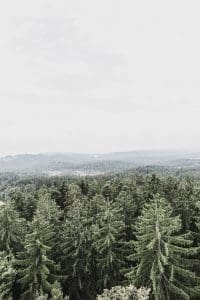
Traditionally, the most popular Christmas tree is spruce, but another type of tree, a non-drop variety, is quickly catching up.
These include the blue spruce, Fraser Fir and Nordmann fir.
These non-drop Christmas trees are proving popular – particularly for those who have children or pets. You will need to ensure your tree is well looked after because – says the British Christmas Tree Growers’ Association – it’s unlikely to survive more than four weeks.
This is a quick guide to real Christmas trees you may consider buying:
Norway spruce
The Norway spruce is a popular choice because:
- It gives off a lovely pine scent.
- But it needs regular maintenance and loss of watering. Also, the spiky leaves mean it’s not child-friendly.
Nordmann fir
Accounts for 75% of sales and can last up to six weeks.
- Quickly growing in popularity, the Nordmann fir is a popular Christmas choice in the UK. They have a symmetrical shape with broad, dark green needles and a wide base.
- They are non-drop Christmas trees and will retain their needles for much longer than traditional Christmas trees usually do.
- Also, these fir trees are fairly low maintenance when being kept indoors.
Blue spruce
Another popular choice in Britain is the blue spruce with the needles having a silver-blue tinge over the Christmas period. However, the needles are sharp though the tree does retain them for quite a while.
The difference between this and a Norway spruce is that the needles are a little bit longer and the tree also has a nice symmetrical form.
Other Christmas trees worth considering:
- Noble fir: Tend to be more expensive but retains its needles for longest.
- Scots pine: Scotland’s national tree has a lovely fragrance and is not common among buyers. They do have sharp needles but will retain them for a long time, even when the tree soil is dry. If you are planning on adding lots of decorations, and Scots pine will be a sound choice.
Disposing of your Christmas tree
Most local councils in the UK will offer a collection service to residents for their Christmas tree, usually asking they be put by recycling bins for picking up.
Other councils offer free recycling should residents take theirs to a drop-off point and some recycling plants. You need to check your council’s website to see what arrangements they have in place.
Christmas tree trends
One of the surprising Christmas tree trends to appear in the last few years is for people to buy not one but two Christmas trees.
Various retailers say they have seen an increase in customers buying two and when they’ve researched this, they found that parents want a big tree for the living room and a small one for the children’s bedroom.
For many people, the Christmas tree has now become a status symbol, as well as a design feature.
B&Q says that a quarter of its customers wanting a real tree are also buying a sparkly, fake tree.
‘Households to display more than one tree’
A spokeswoman said: “There’s a growing trend for households to display more than one tree so this gives children and parents a chance to stamp their mark.”
Tesco also says that it has seen a rise in small fake tree sales with 25% of these also being bought alongside tasteful, larger versions of Christmas trees.
The supermarket says that the smaller Christmas trees are being placed in children’s bedrooms or in hallways.
A spokesman said: “Regardless of economic conditions, this is part of a trend to splash out on children.”
Creating an impressive larger Christmas tree
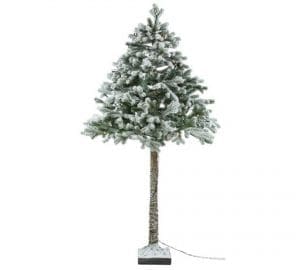
The trend underlines that children are being used to make their decorations and baubles for their own tree in their bedroom while parents focus on creating an impressive larger Christmas tree in the living room.
Indeed, there’s also a trend for retailers to sell increasingly sophisticated fake Christmas trees made with pink or black branches and even upside-down Christmas trees are proving popular.
If you are thinking of installing an upside-down Christmas tree, then you really are ‘on trend’ and though they look unusual and striking, most modern homes will struggle getting them to attach to strong ceiling hooks so they will dangle safely over the Christmas period.
Among other unusual Christmas tree offerings, is the rising popularity of a half Christmas tree, which is a great way to deter pets and children who are enthusiastic at pushing over trees.
These fake trees usually stand 6 feet high but the first branches only start at 93 cm so will keep tinsel and baubles out of the reach of little hands, dogs and cats.
Last year, John Lewis says its bestselling fake Christmas tree was a modern take on a silver birch that was made from paper without a fake green needle being added.
There’s no doubt that while traditional real Christmas trees have a place in our hearts and homes, it appears that realistic and unusual Christmas trees are taking off in popularity and one day – who knows? – we may look back and wonder why buying real Christmas trees died out!

